On one of the cloudier days out at North Topsail, before the rains came, I was walking out the walkway/deck towards the gazebo when I saw movement in the reeds nearby, and had the long lens in hand (with a camera attached, too!) so I could take advantage of it. Unlike the green herons in the area, this one was pretty blasé about my presence.
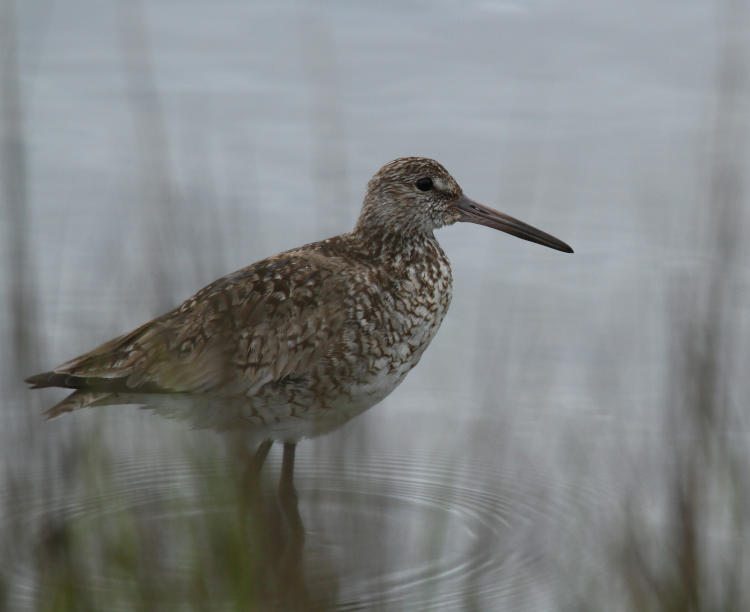
This is a willet (Tringa semipalmata,) a medium-small wader much like a sandpiper, though larger than most of those while a little smaller than a green heron. I would see them examining the edges of the oyster beds or the small tidal pool nearby while we were there, but never quite this close. Males and females have the same plumage so they’re difficult to distinguish, but the behavior lent weight towards it being a male, slightly. I’ll explain.

This one was quite intent on its preening, having a difficult time with a little misplaced tuft of feathers above the tail, and largely ignored me even though I was only a handful of meters away. I fired off a significant number of frames with lots of poses over the course of roughly two minutes.
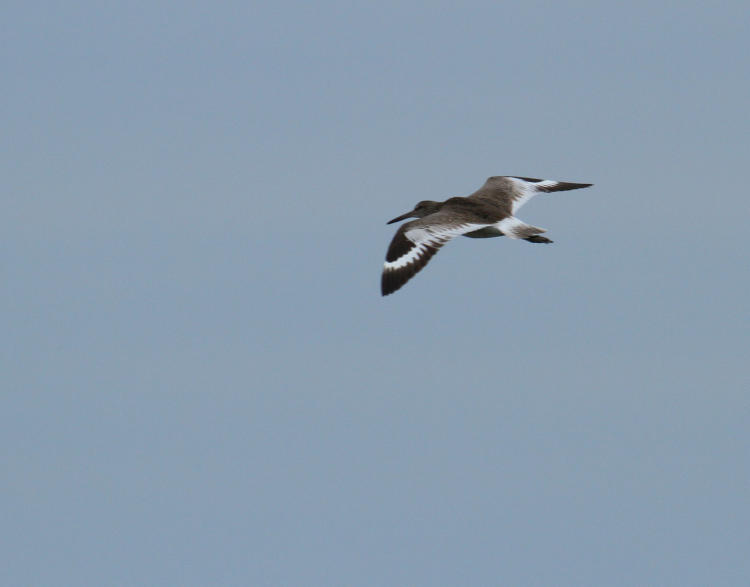
Then, it started calling, receiving an answering call from not too far off, and flew off in that direction. It was easy to follow, providing a nice view of the distinctive wing markings as it did so.
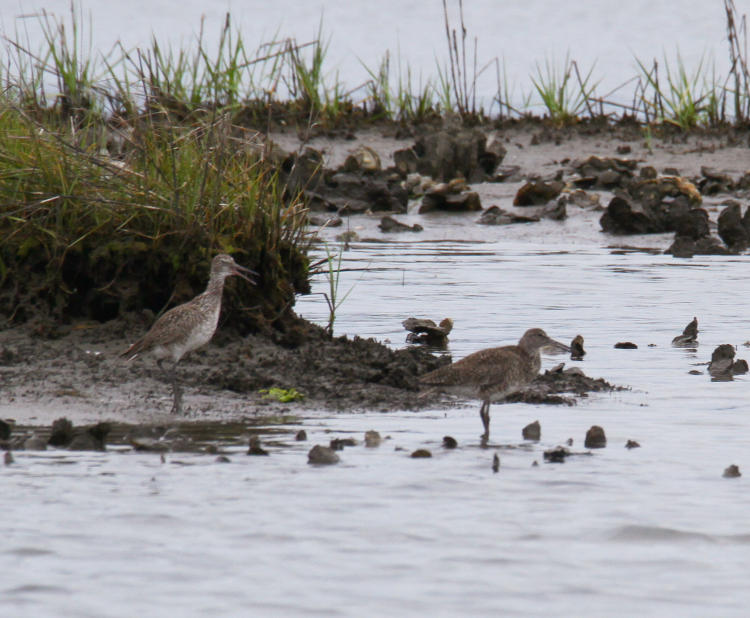
I tracked it until it landed again, eventually realizing that there was another there, the originator of the answering call, but with the muddy background I’d lost track of who was who. The light conditions and the clutter of the landscape there made it a little hard to discern details, even with the long lens (this is cropped a bit.) But the one on the left, who may or may not be the model from the first images, began a series of rapid, almost chuckling quiet calls to the other. Normally birds in close proximity don’t ‘talk’ to one another unless there’s a reason, and this reason was soon confirmed.
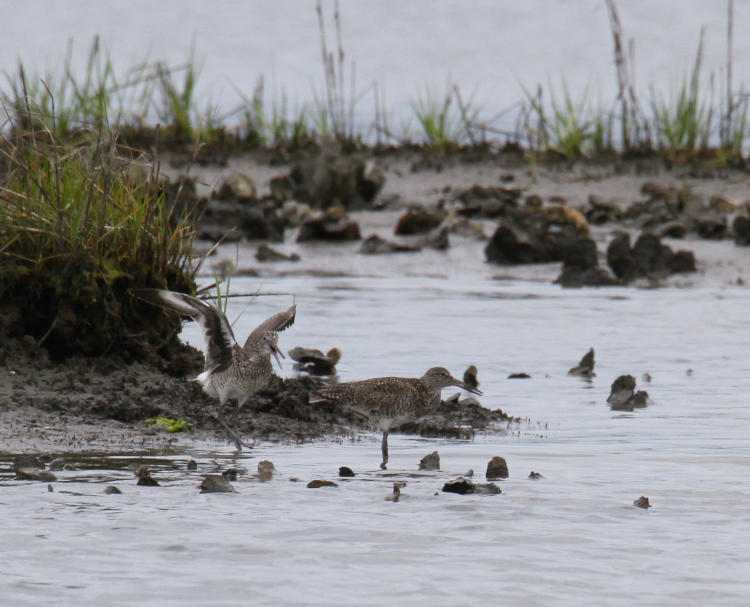
The one on the left was soon revealed to be a male in courtship, as he raised his trembling wings and did a little dance, still talking up a storm, most likely mentioning his pending promotion to divisional manager with a company expense account. The female, as usual, showed no reaction to this.

I couldn’t tell you how the species communicates, really, but without anything outwardly visible, the female signaled acquiescence, anyway, and the male soon made his move, showing off the form he learned from Mr. Miyagi.

I’m pretty sure the technical term for this is ‘wheelbarrowing.’ That’s what I’ve been told, anyway.
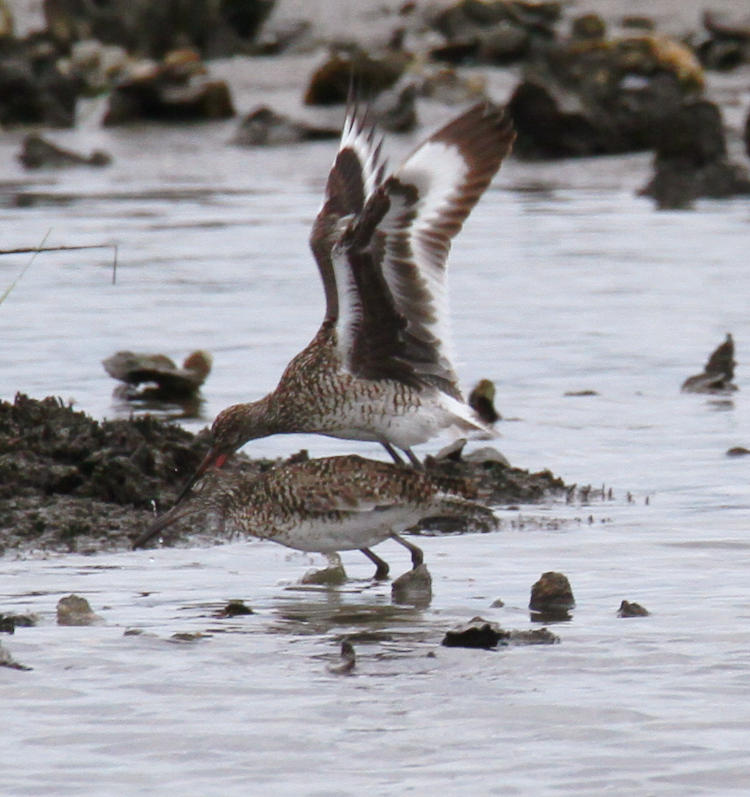
And then, perhaps, the mistake. The female turned the other way, and the male grabbed her entire head in his beak. Maybe this is normal. Maybe this was a protest. Maybe it was a signal. I just know, you should always be sure it’s cool first.
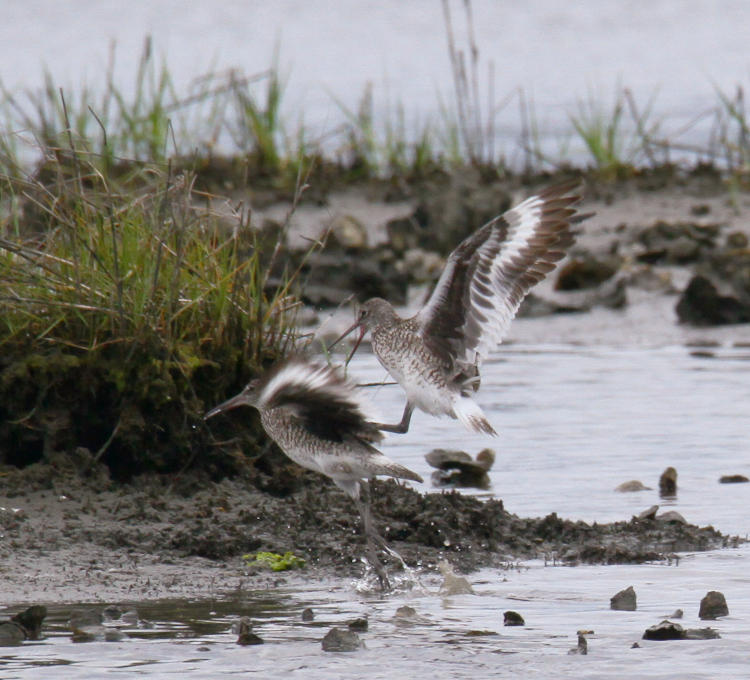
In the same second (literally – I checked the EXIF info,) she took flight. You can read whatever you want into the male’s expression; you don’t need my help.
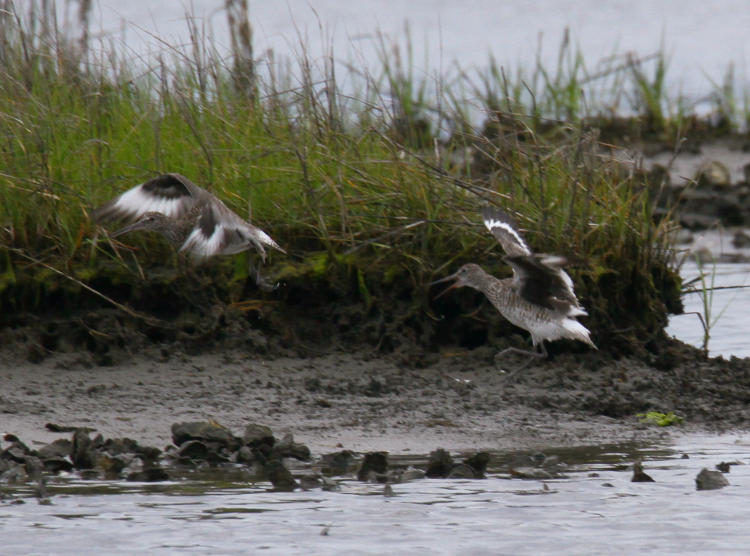
I know what you’re thinking: “Why weren’t you shooting video, Al?” (Maybe not.) And the primary reason is, I went out there for another task, without the tripod, and shooting video at long focal lengths handheld is just bad news, unless you’re partial to seasickness. Even if I’d had the tripod, the chances of setting it up for the initial shots were about nil; the willet was too close and it would have involved too much movement and noise. Once it had flown further off this wasn’t a factor, but then the process would have meant missing some of the action. I’m still pondering the wisdom of hauling the tripod (and microphones, and perhaps video light and external monitor) around a lot more often to be prepared for such opportunities, or if I’ll simply resign myself to shooting video mostly on dedicated outings and only carrying the accoutrements then.
By the way, I figured I’d show you the full frame of the above shot, so you know what I was working with, and yes, this was at 600mm.

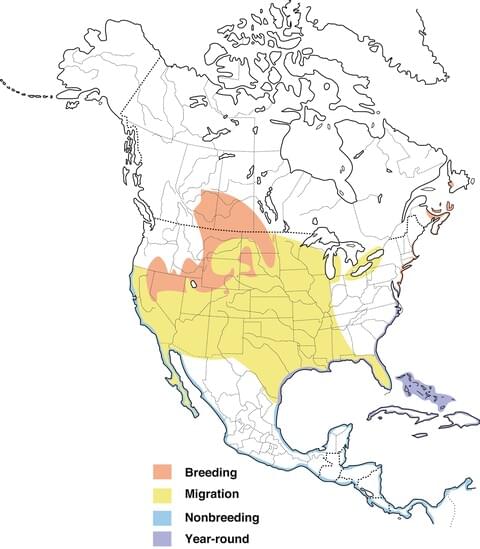
Within a few days, I was seeing a pair of willets foraging together in the same area, lending a very small amount of weight to this being a successful mating; willets are semi-gregarious, easily found in small groups as well as individually, so this isn’t conclusive evidence by a long shot.

And no, that’s not that same difficult tuft of feathers sticking up, but a background oyster beyond the willet. I thought that too for a second…




















































